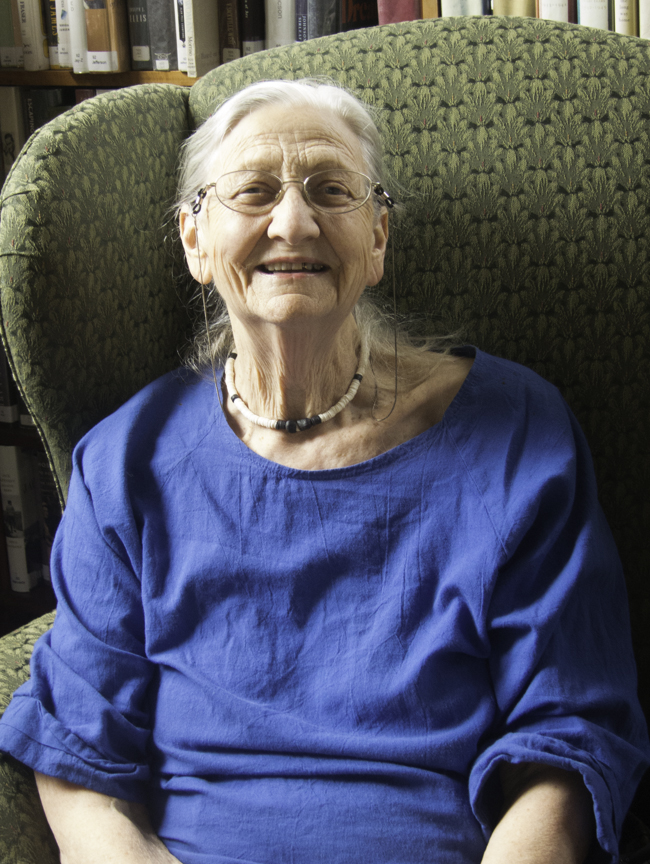
Amelie Scheltema
My life has been filled with miracles; the first was being born April 26, 1928 in Boston. The second large miracle was in 1955 when I met and married my life-long love and partner in things great and small, Rudi Scheltema. We had four summers in Woods Hole, Rudi at the MBL and WHOI, me -- a working girl -- taking the train (remember them?) down from Boston on weekends. The two laboratories were loosely organized then, and thus began my education in biology. In Woods Hole I attended Friday night lectures (same hard seats as now), joined in on Saturday MBL classes, and helped Rudi with his research at WHOI. Rudi's lab was large, with perhaps 7 investigators along a single bench, and overlooked Great Harbor. Everyone squeezed over for me, for staff scientists could have anyone in their labs they wished. (Nowadays one applies as a Guest Investigator who needs proper credentials -- of course, I didn't have any then). The lab had a long, central, double-layered cement table with running sea-water in which I discovered tiny pyramid snails feeding like mosquitos on periwinkles, my first publication. During these summers we rented a room with the Russells in the last of three houses Do, Re, and Mi (now Swope Center) and ate at the MBL Mess Hall. We watched from the porch as the old Fisheries lab, wrecked in the 1938 hurricane, came down, to be replaced by the present building and Aquarium. We made life-long friends with many from MBL and WHOI during those summers.
We came to Woods Hole permanently in 1960, when Rudi joined WHOI full-time. Here came the third great miracle, the start of my profession in the evolution and taxonomy of Mollusca. Rudi invited me to work in his lab at a time when there were only two women on the scientific staff. Howard Sanders gave me a group of little-known deep-sea molluscs, the Aplacophora, to describe from his lab's oceanographic deep-sea dredges. By 1970, women started going to sea and I went along on deep-sea dredging and plankton expeditions.
My presence in Rudi's lab was in those days known pejoratively as "riding on your husband's coattails." I considered it a tremendous opportunity. I had never had a course in biology and was a complete autodidact; possible to do in Woods Hole with lectures and the great library at MBL. There were only two other biologists in the world working on Aplacophora, unique, wormy mollusks with no shell, but covered with needle-like spicules or scales. And I continue to work now, still in Rudi's lab. In my 62nd year I applied for and won a PhD from the University of Oslo based on published work. That "union card" enabled me to win a five-year grant from NSF, and a position at WHOI called Institution Visiting Scholar. The 1990s were years for hiring lab assistants, and mentoring young investigators or postdocs. They all benefitted from the many opportunities offered in Woods Hole. WHOI has been extremely generous to me over the decades in terms of my using space and pens and pencils and advice and in supporting postdocs and mentoring students who wish to study these unusual molluscs. And if I hadn't met Rudi, who knows where I would have ended.
(Amelie passed away June 11, 2015.)
